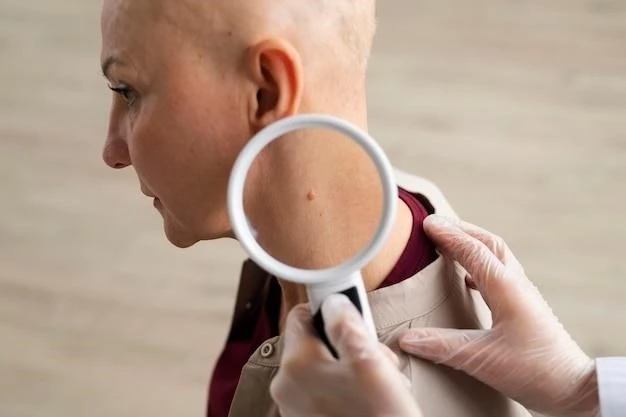Understanding Acute Febrile Neutrophilic Dermatosis
It’s crucial to consider potential triggers like infections, medications, or underlying conditions. Factors like genetics and immune system abnormalities may also play a role.
Causes of Acute Febrile Neutrophilic Dermatosis
Acute Febrile Neutrophilic Dermatosis, also known as Sweet’s Syndrome, can be triggered by various factors. Infections, such as respiratory or gastrointestinal, are common culprits. Certain medications, particularly those affecting the immune system, may also induce this condition.
Underlying conditions like inflammatory bowel disease, leukemia, or autoimmune disorders can predispose individuals to developing Sweet’s Syndrome. Genetic factors and abnormalities in the immune system are believed to contribute to the onset of this dermatosis.
It’s important for healthcare providers to conduct a thorough evaluation to identify and address the underlying cause of Acute Febrile Neutrophilic Dermatosis in order to effectively manage the condition and prevent recurrence.

Clinical Presentation of Acute Febrile Neutrophilic Dermatosis
The clinical presentation of Acute Febrile Neutrophilic Dermatosis typically involves the sudden onset of fever, malaise, and skin lesions. These lesions are often red or purple, tender, and can appear as raised bumps or plaques. They commonly affect the face, neck, and upper extremities.
Patients may also experience joint pain, eye discomfort, and fatigue. In severe cases, systemic symptoms like headaches, nausea, and a general feeling of unwellness may be present. It’s essential to seek medical attention promptly if you notice these symptoms to receive the appropriate diagnosis and treatment.
Understanding the clinical signs of Acute Febrile Neutrophilic Dermatosis can help in early recognition and management of the condition, leading to better outcomes and improved quality of life for affected individuals.
Diagnosis and Differential Diagnosis of Acute Febrile Neutrophilic Dermatosis
Diagnosing Acute Febrile Neutrophilic Dermatosis requires a comprehensive evaluation by a dermatologist or a healthcare provider experienced in dermatological conditions. The diagnosis is usually based on clinical presentation, skin biopsy results showing neutrophilic infiltrates, and ruling out other potential causes of similar skin manifestations.
Differential diagnoses may include infections like cellulitis, autoimmune conditions such as lupus erythematosus, drug reactions, or other types of dermatitis. Differentiating Sweet’s Syndrome from these conditions is crucial for initiating the appropriate treatment plan.
Accurate and timely diagnosis is essential for managing Acute Febrile Neutrophilic Dermatosis effectively and minimizing complications. If you suspect you may have this condition, it is recommended to consult with a healthcare professional for a proper evaluation and diagnosis.
Treatment Options for Acute Febrile Neutrophilic Dermatosis
The treatment of Acute Febrile Neutrophilic Dermatosis aims to alleviate symptoms, resolve skin lesions, and address the underlying cause if identified. Corticosteroids, such as prednisone, are commonly prescribed to reduce inflammation and rapidly improve skin manifestations.
Other immunosuppressive medications like colchicine, dapsone, or indomethacin may be utilized in cases where corticosteroids are not suitable or effective. Potassium iodide may also be considered as an alternative treatment option.
In severe or refractory cases, biologic agents targeting specific pathways involved in the pathogenesis of Sweet’s Syndrome may be recommended. It’s essential to follow your healthcare provider’s guidance closely and attend regular follow-up appointments to monitor your response to treatment and adjust the therapeutic approach as needed.
Prognosis and Complications of Acute Febrile Neutrophilic Dermatosis
The prognosis for Acute Febrile Neutrophilic Dermatosis is generally favorable with prompt and appropriate treatment. Most patients respond well to therapy, and their skin lesions typically resolve within weeks to months.
However, if left untreated or in severe cases, complications such as chronic skin ulcers, scarring, or relapses of the condition may occur. It’s essential to follow the prescribed treatment plan diligently and maintain regular communication with your healthcare provider to monitor your progress and address any concerns promptly.
By adhering to treatment recommendations and staying informed about potential complications, individuals with Acute Febrile Neutrophilic Dermatosis can achieve positive outcomes and effectively manage their condition in the long term.
Research Advances in Acute Febrile Neutrophilic Dermatosis
Ongoing research in Acute Febrile Neutrophilic Dermatosis is focused on enhancing our understanding of the underlying mechanisms of the condition and identifying novel therapeutic targets. Studies are exploring the role of immune dysregulation and genetic factors in the development of Sweet’s Syndrome.
Advances in molecular biology and immunology have led to the exploration of biologic agents that target specific pathways involved in the pathogenesis of Acute Febrile Neutrophilic Dermatosis. Clinical trials are investigating the efficacy and safety of these novel treatments in managing the disease.
By staying updated on the latest research findings and potential breakthroughs in the field, healthcare providers can offer cutting-edge treatment options to patients with Sweet’s Syndrome and contribute to further improving outcomes and quality of life for individuals affected by this dermatosis.
Management Strategies for Acute Febrile Neutrophilic Dermatosis
Managing Acute Febrile Neutrophilic Dermatosis involves a multifaceted approach aimed at controlling symptoms, addressing underlying causes, and preventing relapses. Regular follow-up appointments with a dermatologist or specialist are essential to monitor disease progression and treatment response.
In addition to medication management, lifestyle modifications such as stress reduction techniques and maintaining a balanced diet can complement treatment efforts. Avoiding potential triggers, such as certain medications or environmental factors, may also help prevent flare-ups of Sweet’s Syndrome.
Educating yourself about Acute Febrile Neutrophilic Dermatosis, adhering to prescribed therapies, and seeking support from healthcare professionals and patient advocacy groups can empower you to effectively manage the condition and optimize your overall well-being.
Patient Education and Support for Acute Febrile Neutrophilic Dermatosis
Educating patients about Acute Febrile Neutrophilic Dermatosis is crucial for empowering them to actively participate in their care. Providing information on symptoms, triggers, treatment options, and lifestyle modifications can help individuals better manage their condition.
Support groups and online resources can offer valuable emotional support and a platform to connect with others facing similar challenges. Engaging with healthcare providers, staying informed about the latest research, and following a treatment plan can enhance the overall quality of life for patients with Sweet’s Syndrome.
By raising awareness, fostering a sense of community, and promoting self-care practices, patients with Acute Febrile Neutrophilic Dermatosis can navigate their journey with the condition more effectively and advocate for their needs within the healthcare system.
